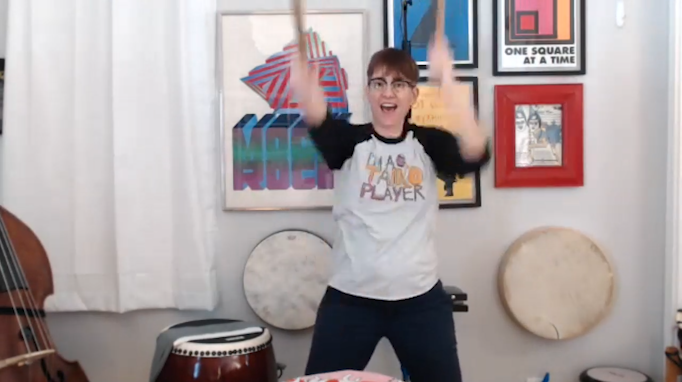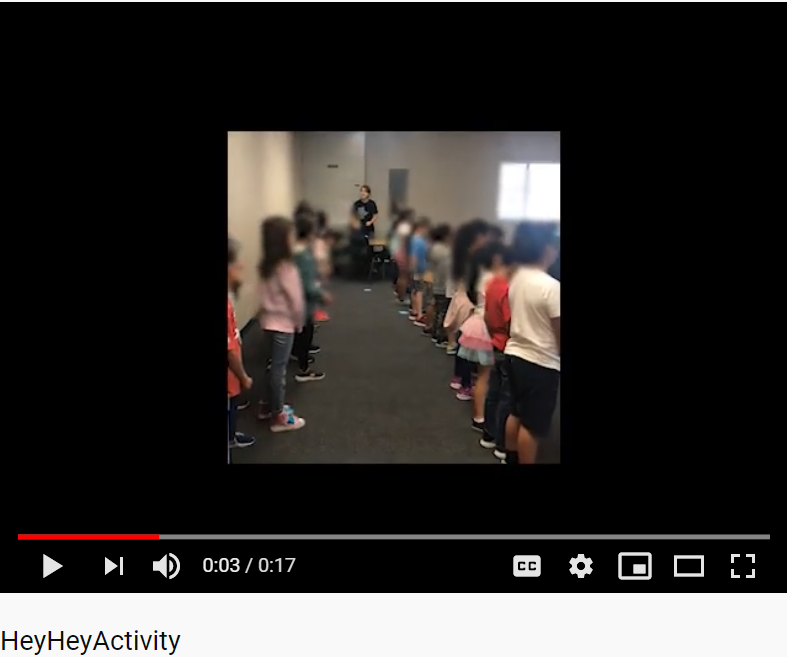Taiko teaching artist is the best job I’ve ever had. It’s also the hardest job I’ve ever had. Here are 10 things I’ve learned over the years that make teaching taiko in schools easier.
Make friends with the Office Manager and Custodian.
These folks have difficult and under-appreciated jobs. At the same time, they can be highly influential on your residency’s success. An office manager who feels valued by you will call teachers who haven’t shown up for class, or make an announcement to remind teachers to bring whiteboards. A custodian who feels valued will make sure students don’t mess with your drums when you’re on break. They are critical allies. Learn their names. Smile at them. Thank them. Give them a Starbucks gift card. It will make your life easier. (Depending on your school, the office manager may also be called the secretary or receptionist.)
2. Store your drums at the school.
Teaching by yourself is hard, and if you have to load in and out of the school every day, it’s close to impossible. If a school can’t provide you with secure storage for your equipment, don’t take the residency. It won’t be worth it.
3. Load in BEFORE your first day.
Your first day is hectic enough without also having to load in all of your equipment.
4. Set your class up in curved rows, not a circle.
If you’re in the middle of a circle, some students will always be facing your back. If you join the circle, kids at your 2 o’clock and 11 o’clock will have trouble seeing you. With curved rows, all students will have a good view of your face and will be better able to hear you.
5. Avoid residencies that are folded into after-school programs.
Taiko is fun! Taiko is loud! Taiko is exciting! The structure of the regular school day, along with good classroom management, can help even the most excited kids stay focused. After-school programs (aka after-care) are far less structured and it’s too hard to avoid chaos when teaching taiko in them. Do yourself a favor and don’t accept a residency if it’s incorporated into an after-school program. (But by all means, if you have your own studio and the students come to you, offer taiko classes after school. That’s a different thing all together.)
6. Have students help you clean up.
Students as young as 2nd grade can reliably handle the responsibility of packing drums and putting them back in their storage spot. Ask your last teacher of the day to leave you 5 kids to help pack up. They’ll LOVE doing it, and it will make your life easier.
7. Include classroom teachers.
Just like the Office Manager and Custodian, a classroom teacher who feels valued is a powerful ally. Their enthusiasm about your classes will shape the students’ enthusiasm. Email your lesson plans to classroom teachers in advance, give them the opportunity to participate, let them teach any arts integration you’re incorporating. Also be sure and send them your bio before you start so they understand that you’re a competent professional coming to enrich the education of their students.
8. Informance, not performance.
Schools are likely going to ask for a performance at the end of your residency. I always suggest having the last class be an informance instead and schools almost always go for it. For an informance, I invite the students’ families to come watch the last class. I guide the kids through the activities they’ve learned (which always includes at least one song) and pause regularly to explain to the “audience” what skills the students just demonstrated.
Families LOVE this: they get to watch their student the whole time, rather than attending an evening performance where multiple classes perform. Teachers LOVE this: they don’t have to come back to school for an evening event after a long day. Kids LOVE this: it’s lower stakes than a performance, they still get to show off, and they’re in the spotlight the whole time. I LOVE this: it doesn’t add an additional event to my scope of work and I can focus the entire residency on skill building rather than creating a performance product.
9. Allow for mistakes (your and theirs).
Most students aren’t going to immediately succeed. Don’t get frustrated. Find different ways to practice skills and keep at it. They’ll learn. (This is why I have umpteen pulse activities.)
The same is true of you as a teacher. You’re not going to succeed all of the time. Some activities will fall flat. You’ll accidentally say “don” when you mean to say “su.” You’ll forget that the school changed your schedule one week and you won’t show up on time. I’ve done all of these things. It’s not awesome, but the more you can dust yourself off and try again the better your mental health will be. Bonus: if you can dust yourself off and try again in front of your students, you’re modeling for them a growth mindset, which is something kids need to see.
10. Get rest.
Teaching is exhausting. It makes you WAY more tired than just playing taiko. Get your rest and eat your Wheaties on teaching days. If you drink alcohol, don’t drink the night before a teaching day. Alcohol messes with your sleep and a restless night = a rough teaching day.
There you have it! The top 10 things I wish I’d known when I started teaching. I hope they’re helpful to you. Happy teaching!























